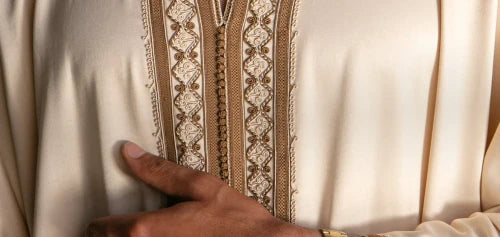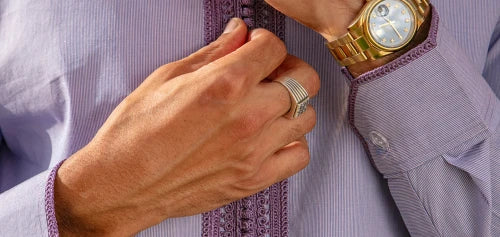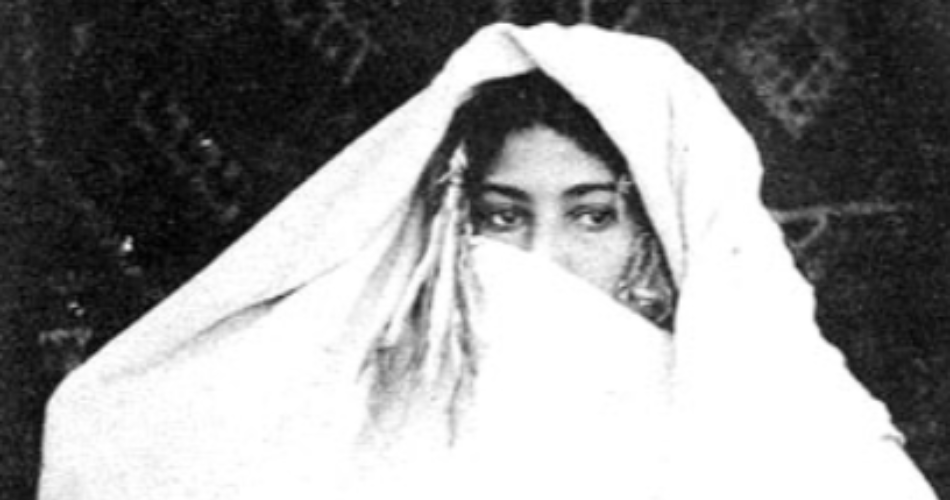Today, as part of our Moroccan Cultural Attire Explained series, we are exploring the Tarboosh, which adorned the heads of many Arab men for over a century.
The Moroccan Tarboosh, also known as the Fez hat, holds a unique place in Moroccan history and fashion. Named after the Moroccan city of Fez, where the dye used to color the hats was originally produced from crimson berries, this hat is more than just a fashion accessory—it’s a symbol of national pride.
The Tarboosh Origins
The Fez’s origins are debated and a bit confusing, with claims ranging from ancient Greece to the Balkans. However, its widespread acceptance is often attributed to the Ottoman Empire, which popularized the hat throughout much of the Middle East and Eastern Europe in the 19th century. Interestingly, Morocco never fell under Ottoman rule, and its association with the Fez remains distinct.
Historical references from the early 1800s highlight that the Arabic-speaking population of Malta wore the long red tarboosh, a tradition tracing back to their desert ancestors. Another theory suggests that the Persians introduced a red tasselled cap to North Africa in the late 600s AD. In Tunisia, for example, the chechia, a smaller, more softer version became prominent. However, in Morocco, leaders like Moulay Sharif ibn Ali popularized the structured tarboosh wrapped with an ‘amamah for added stability by the 1600s. This style became a prominent way of wearing the tarboosh in Morocco, merging Persian and Arab influences into traditional attire.
The Tarboosh In Morocco
In Morocco, the Tarboosh became a symbol of resistance during the French occupation. Worn by nationalists, it represented defiance and cultural pride in the face of colonial rule. Today, the Tarboosh is associated with the Moroccan royal court. The King of Morocco, along with cabinet ministers, royal guards, and palace staff, wear the Fez as part of their official attire. This has cemented the hat’s place as a prestigious symbol, even though its everyday use has waned.

Image Source: France24.com
While once widely worn, the Tarboosh has become less common among younger generations in Morocco, much like the top hat in Western fashion. It is now reserved for special occasions like weddings or official events at the royal palace. You can also see them pop up in special performances or as cultural uniform for hotel or restaurant staff.
Despite its declining popularity, the Tarboosh remains a cherished piece of traditional Moroccan attire, deeply tied to the country's cultural identity and history.
In the 1950s, the tarboosh began to fade in the Arab world and from men's daily attire. It was either banned or no longer required in many countries. Despite this, the tarboosh continues to hold significance in Morocco, where it is worn on special occasions and during official ceremonies. While some men still wear the tarboosh as a nod to tradition, in most countries, it is now produced primarily as a novelty item for tourists. Its use has declined, but its cultural importance remains.

Morocco was never under Ottoman rule, so despite the political conspiracies the Tarboosh has in Turkiye, Morocco definitely has given it it's own unique significance.
In Morocco, the Tarboosh became a symbol of resistance during the French occupation, representing cultural pride and defiance. Today, it’s mostly associated with the Moroccan royal court, worn by the King, royal guards, and palace staff, symbolizing prestige and tradition. The Fez is also donned by grooms during weddings, paired with a yellow or cream-coloured Jabador and Jellaba set, and completed with bright yellow balgha, traditional Moroccan slip-on shoes originally made from leather.

Image Source/credit: (AP Photo/Abdeljalil Bounhar)
Follow the Series
This blog post is part of a series exploring traditional Moroccan clothing, where we delve into how these garments and their accessories have evolved over time and how they are worn today. Including the Tarboosh in the "Moroccan Cultural Attire Explained" series was essential because of its deep-rooted historical and cultural significance in Morocco. While the Fez hat is recognized globally, its importance in Morocco as a symbol of resistance during the French occupation and its modern connection to the royal court highlights how this accessory represents more than just fashion.
One of the complexities of understanding Arab fashion is the variation in terminology across different regions. The same piece of clothing may be known by multiple names depending on the location, adding to the challenge. Moreover, a single word can have multiple meanings in different communities. For instance, "tarboosh" can refer to a variety of things, from an article of clothing to a dental crown, depending on the context. In the Emirates, "tarbusha" even refers to a tassel, demonstrating the diversity of language and interpretation.
The Tarboosh ties together traditional values, nationalism, and religious observance, making it a vital piece of Morocco’s cultural identity, especially during special occasions like weddings and official events.
Stay tuned for more insights into Morocco's rich sartorial heritage!









